Sadie Thompson
8.2 /10 1 Votes8.2
83% Rotten Tomatoes Genre Drama Country United States | 8/10 IMDb Director Raoul Walsh Duration | |||||||||||||||||||||||||||||||||
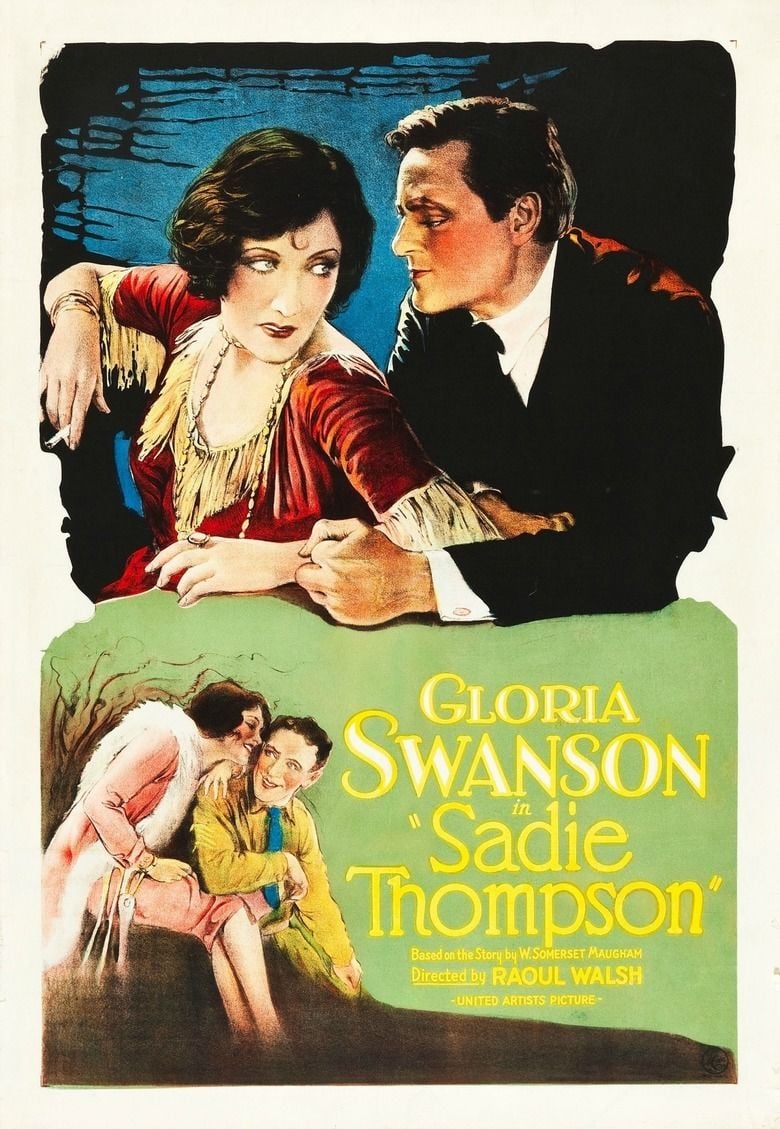 | ||||||||||||||||||||||||||||||||||
Language SilentEnglish intertitles Release date January 7, 1928 (1928-01-07) (wide release) Writer W. Somerset Maugham (story), Raoul Walsh (adaptation), C. Gardner Sullivan (titles) Screenplay Raoul Walsh, C. Gardner Sullivan Story by W. Somerset Maugham, John Colton, Clemence Randolph Cast Gloria Swanson (Sadie Thompson), Lionel Barrymore (Alfred Davidson), Blanche Friderici (Mrs. Alfred Davidson), Charles Willis Lane (Dr. Angus McPhail), Florence Midgley (Mrs. Angus McPhail), James A. Marcus (Joe Horn, the trader)Similar movies Youth , How Foolshead Paid His Debts , Unfriended , Cake , Paperman , Valkyrie | ||||||||||||||||||||||||||||||||||
Sadie Thompson is a 1928 American silent drama film that tells the story of a "fallen woman" who comes to Pago Pago on the island of Tutuila to start a new life, but encounters a zealous missionary who wants to force her back to her former life in San Francisco. The film stars Gloria Swanson, Lionel Barrymore, and Raoul Walsh, and was one of Swanson's better known silent films.
Contents
- Amazing cigarette kiss from sadie thompson 1928
- Plot
- Cast
- Production
- Release and reception
- Awards and honors
- Restoration and home media release
- Other film adaptations
- References

Due to the subject matter, the making of the film was extremely controversial. However, it was a financial and critical success for Swanson. The film was based on the short story "Rain" by W. Somerset Maugham and the 1922 play that was based on the book by John Colton and Clemence Randolph, starring Jeanne Eagels.
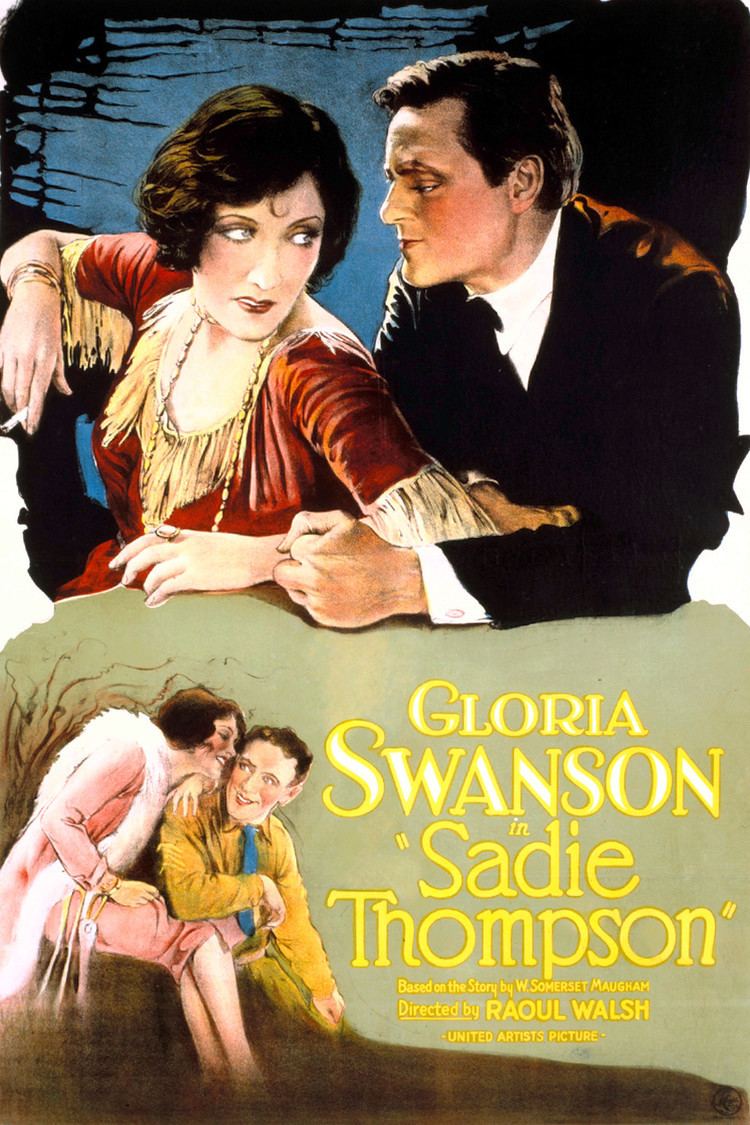
Amazing cigarette kiss from sadie thompson 1928
Plot
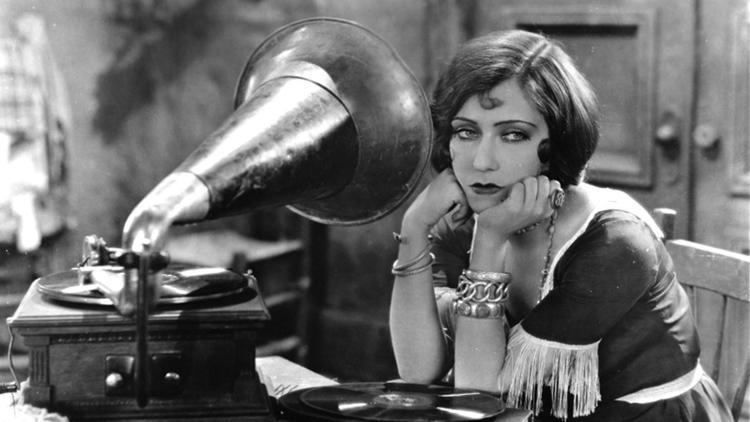
A smoking, drinking, jazz listening, young prostitute named Sadie Thompson (Gloria Swanson) arrives at Pago Pago (now part of American Samoa), on her way to a job with a shipping line on another island. At the same time, 'moralists' arrive, including Mr. and Mrs. Davidson (Lionel Barrymore and Blanche Friderici). They all end up staying in the same hotel, where the Davidsons plot to teach the natives about sin and Sadie entertains a bunch of Marines.
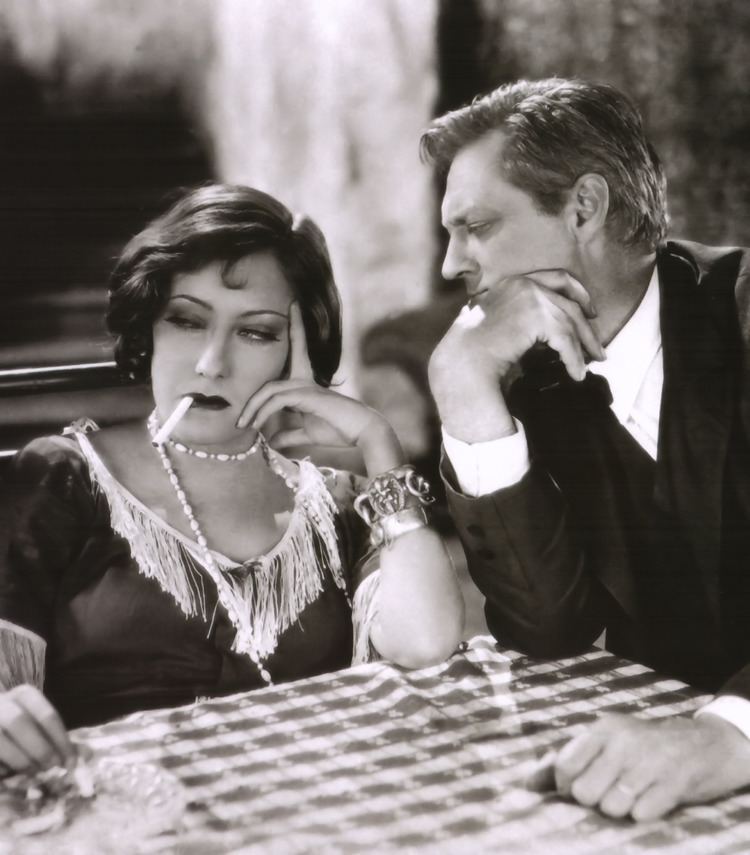
Sadie begins to fall in love with Sergeant Timothy O'Hara (Raoul Walsh), who is not fazed by her past. He tells her that he has a best friend who married a former prostitute, and the couple now live happily in Australia.
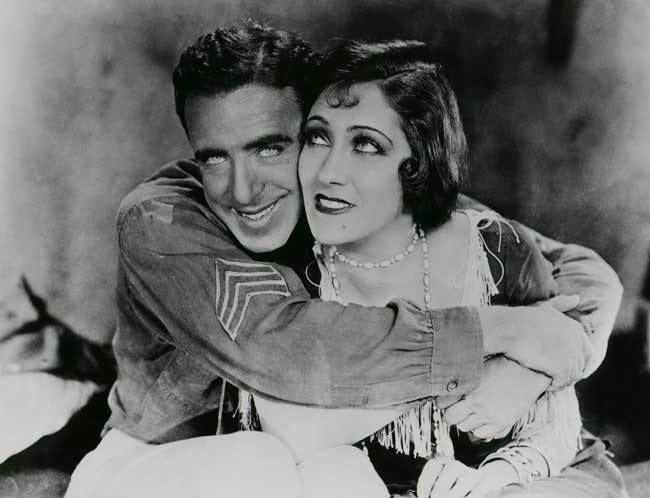
Davidson sets about trying to redeem Sadie, much to her disgust. He tricks her into telling him about her past in San Francisco and, once she refuses to repent, he declares that he will go to the Governor and have her deported. Sadie is terrified of the threat, but O'Hara assures her that it will not happen. He tells her he wishes she would go to Australia and wait for his term of service to finish, after which they can get married. She agrees.

Davidson gets his way, however, and Sadie is livid. She and O'Hara go to the Governor, begging him to let her go to Australia instead of back to San Francisco. Davidson has also managed to get O'Hara punished for being immoral, but Sadie will be able to go to Australia instead if Davidson approves. Sadie pleads with him, but to no avail. She eventually confesses that, if she goes back to San Francisco, there is "a man there who won't let her go straight", which is what she wants to do. Davidson figures out this means that there is a warrant for her arrest back in San Francisco. Sadie claims that she was framed and is innocent, but will go to prison if she is sent back.
Davidson still refuses, saying she must atone for her past. Sadie pleads and pleads and eventually offers to repent. Davidson, however, says that the only way to fully repent is for her to go to prison. Sadie runs to her room, crying out for Davidson. Davidson returns and Sadie confesses she is afraid. Davidson then tells her that, if she repents, there will be nothing to fear and he begins to pray with her. Sadie converts to Christianity.
Sadie prays for three whole days. She has put away her old things and has become a modest woman. O'Hara returns and finds Davidson is gone, apparently "trying to stop the locals from dancing on the beach". O'Hara tells Sadie that he has a fishing boat waiting to take her and her things to a ship that will then take her to Australia, where they can marry and be free. Sadie is extremely afraid and refuses to go, saying that the "old Sadie is dead" and she must go to San Francisco and prison, to repent.
O'Hara does everything he can, including forcibly taking her from the room, but Davidson is waiting outside. O'Hara tries to attack him, but Sadie asks him not to. O'Hara, extremely upset, leaves and Sadie pleads with Davidson not to get him in trouble, for "it was all her fault".
Later that night, Sadie is asleep and everyone else is heading to bed. Davidson can not sleep and goes out for a walk in the rain. (It has rained almost continuously.) His wife says he cannot sleep for "the unpleasant dreams he's been having about Miss Thompson". A fellow boarder suspects they are not "all that unpleasant". Outside, Davidson struggles with himself and realizes that he is sexually attracted to Sadie and unable to handle it. He looks into her window and eventually returns to his room.
Sadie, frightened because she heard noises, is waiting in Davidson's room. Davidson is shocked and sends her back to her room. The last reel is missing, but fishermen find Davidson's body. He has committed suicide. Sadie and O'Hara reconcile and head for Australia.
Cast
Production
In 1927, Swanson released her first independent film for United Artists, The Love of Sunya which was filmed on her terms in New York City and was the opening night film of the Roxy Theatre. The production had been a disaster and Swanson felt it would receive a mediocre reception at best. On the advice of Joseph Schenck she relented and returned to Hollywood to prepare for a new picture. Feeling she would never have as much artistic freedom and independence as she had at that moment, Swanson decided she, "Wanted to make my Gold Rush." Schenck pleaded with her to do a commercially successful film like The Last of Mrs. Cheyney. Swanson felt it too formulaic and decided to call upon director Raoul Walsh, who was signed with Fox Film Corporation at the time.
Walsh had been known for bringing controversial material to film. At their first meeting, Swanson suggested a film based on the John Colton and Clemence Randolph play Rain (1923), which in turn was based on the story by W. Somerset Maugham titled "Miss Thompson" (1921). Swanson had seen Jeanne Eagels perform the role on stage twice and enjoyed it.
However, because of its content, the play was on the 'unofficial blacklist' and had quietly been banned from being made into a film a year earlier. To try and avoid issues with the code, Swanson and Walsh decided to leave out profanity, rename 'Reverend Davidson' to 'Mr. Davidson', and claim it was for the sake of morality to produce the picture, as Irving Thalberg had produced The Scarlet Letter (1926) at MGM.
Swanson invited Will Hays for lunch and summarized the plot, naming the author and the sticking points. According to Swanson, Hays made a verbal promise that he would have no problem with the making of such a film. Swanson set about getting the rights to the play by having Schenck pretend to buy it in the name of United Artists, never to be used. Thus they were able to get the story rights for $60,000 instead of the original $100,000. When news broke as to just what was intended with the play, the three authors threatened to sue. Swanson later contacted Maugham requesting that he write an original story that served as a sequel. The sequel would involve following what became of Sadie in Australia. Maugham agreed to write a new story (for $100,000) but a sequel was never made.
Swanson and Walsh set about writing the script, and discreetly placed an ad announcing the film, thinking no one noticed, as Charles Lindbergh had just made his historic flight. However, the press picked up on it and sensationalized the story. United Artists received a threatening two-page telegram from the MPAA, signed by all its members including Fox (Walsh's studio) and Hays himself. In addition, the rest of the signers owned several thousand movies houses and if they refused to screen the film, it could be a financial disaster. This was the first time Swanson had heard the name of Joseph P. Kennedy, with whom she would later have an affair and who would finance her next few pictures, including Queen Kelly (1929).
Swanson was angered by the response, as she felt those very studios had produced "questionable" films themselves and were jealous at not having the chance to produce Rain. After another threatening telegram, she decided to first appeal to MPAA and then the newspapers. She only heard back from Marcus Loew, who promised to appeal on her behalf, and since he had a chain of theatres, this eased some of her concerns. Figuring the silence meant the matter had been dropped, Swanson began filming on Sadie Thompson, which already had a quarter of a million dollars invested in it.
Before casting began, 17-year-old Douglas Fairbanks, Jr. wanted to audition for the role of Handsome O'Hara. However, Swanson felt he was too young and not right for the role. Lionel Barrymore had been first picked to play Davidson, but was thought to be too ill at the time, though he did eventually win the role. Barrymore wore the same outfit for an entire week, aggravating Swanson. She asked some of the crew to tell him to change and wash; which he did indeed do. Despite this, Swanson was happy with his performance. Walsh had not acted in front of a camera in eight years and feared he would not be able to both direct and act at the same time. However, two days into filming, his fears were quelled.
Filming took place on Santa Catalina Island, near Long Beach, California. Swanson took ill shortly after and met a doctor who started her lifelong love of macrobiotic diets. A week into shooting, Sam Goldwyn called cameraman George Barnes away. Swanson was furious, but the loan contract allowed Goldwyn to call him away as he pleased. Not wanting to let a hundred extras sit around for days, Swanson and Walsh tried to hire two other cameramen, but both were unsatisfactory. Mary Pickford offered the services of her favorite cameraman, Charles Rosher, who was called in, but despite doing a decent job, could not match Barnes' work. Through Loew, MGM loaned Oliver Marsh, who completed the picture.
The entire cameraman problem was extremely costly to the production, yet the picture went on. With the picture half finished, it was already way over budget and Schenck was wary, as Swanson's first picture had also been over budget and underperformed. Swanson talked with her advisers and sold her farm at Croton-on-Hudson, and offered to sell her New York penthouse as well.
Despite reports that dirty words can be read on the characters' lips, Swanson claims the censors went over everything with a fine-tooth comb. However, Swanson admitted one line while she was shouting at Davidson went, "You'd rip the wings off of a butterfly, you son of a bitch!", when recounting a conversation with Walsh later in life. If the word "rain" was used in a title card, the censors asked that it be removed. They also wanted to change Davidson's name to something else, but Swanson and Walsh refused.
Release and reception
Upon its release, Sadie Thompson was praised by critics as was Swanson's performance. Contemporary film critics have cited Swanson's performance as one of her best.
The film was a financial and critical success and was the only silent, independent film of Swanson's to do well at the box office. In fact, it was one of her last financially successful films, along with the talkies The Trespasser and Sunset Blvd. It went on to make $1 million in the United States and $7 million internationally. However, at Kennedy's advice, Swanson had sold her distribution rights for the film to Schenck, as Kennedy felt it would be a commercial failure. He also did not care for the image Swanson portrayed in the film. By this point, Queen Kelly had been a disaster and Swanson regretted it.
The film made the top 10 best pictures of the year list as well. It would be the last film Raoul Walsh acted in, as he soon lost an eye in an accident.
Awards and honors
Swanson was nominated for an Academy Award for Best Actress in a Leading Role, and George Barnes for Best Cinematography at the 1st Academy Awards for this film, The Devil Dancer and The Magic Flame. Swanson did not attend the ceremony, and always felt it was like "comparing apples to oranges".
The film is recognized by American Film Institute in these lists:
Restoration and home media release
The film was thought to have been lost for years. After Swanson's death in 1983, the sole known surviving print of the film was discovered by her estate; it had originally been stored in Mary Pickford's personal archive. By that time, the final reel had become damaged. The film was bought by Kino International, which hired Dennis Doros to reconstruct the final reel. Doros used the original title sequences, still photos and footage from the 1932 adaptation (which cinematographer Oliver T. Marsh also shot) to substitute for the lost footage. A new score by Joseph Turrin was also composed for the film.
Kino's version has been issued on DVD and online via Netflix, as well as shown on Turner Classic Movies.
Other film adaptations
References
Sadie Thompson WikipediaSadie Thompson IMDbSadie Thompson Rotten TomatoesSadie Thompson themoviedb.org
